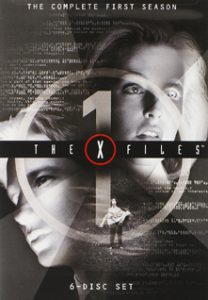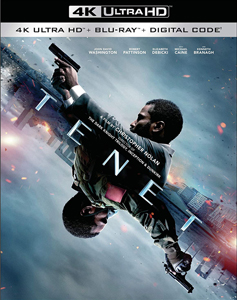I watched “Tenet” on one of those bare-bones discs from Redbox, but presumably we can also buy editions that include bonus features. Hopefully one of the bonus features is called “Here’s What Happened.” Writer-director Christopher Nolan has given us “Memento,” where the story moves backward; “Inception,” where people enter dream worlds; and “Interstellar,” where people move through folded time and space. Those movies now look tame.
A step too far?
I think Nolan has gone a step too far with “Tenet,” but he’s earned enough of the benefit of the doubt that I give it a light recommend for its sheer ambition.
The story follows The Protagonist (John David Washington, developing into an action/intrigue star like his dad Denzel). He’s a member of Tenet, a worldwide secret ops group that aims to stop arms dealer Sator (a scary Kenneth Branagh) from killing all humans by compiling a superweapon that will permanently reverse entropy for everyone, everywhere.
Humanity would then somehow continue (we’re vaguely told), but with entropy reversed, it would get a new lease on life with climate issues now trending in the other direction.
(No mention is made of whether the dollar would regain value as governments begin letting people keep more of their money, but presumably this would be the case.)
Weird science
“Tenet” is packed with impressive execution of the inverted-entropy sequences. They are also visually amusing in the way that Philip K. Dick’s “Counter-Clock World” is conceptually amusing.
The Protagonist and his ally, Neil (Robert Pattinson), fight inverted-entropy soldiers (noticeable by their breathing masks) in a fashion wherein one combatant appears to move forward and the other appears to move backward. The filming logistics are no doubt mind-boggling.
On the downside, the film is also packed with unexplained things to the point where one’s whole brain is engaged in trying to understand what’s happening; thus we can’t enjoy the technically incredible filmmaking or decent character arcs like we should.
An opening sequence seems to send The Protagonist into a Matrix of sorts; his handler says “Welcome to the afterlife” after The Protagonist takes a fake suicide pill. But this is not the case – even though the hero gives a Keanu-esque “Whoa.”
We’re shown how a person can invert their entropy (they go through a special airlock type of chamber) but not shown how they switch back to forward entropy. But we know they can do so, as we see them back in normal time flow, without their breathing masks. This, in fact, is key to a final showdown.
An actioner at heart
A science mind-bender only in a visual sense, “Tenet” is a world-hopping actioner at heart – and a good one if you can set aside the incomprehensible and undercooked ideas. The super-sailboats might’ve been found in a “James Bond” movie, and a bungee-cord entrance and exit to a penthouse could’ve fit in a “Mission: Impossible” film.

The score by Ludwig Göransson is impressively its own thing. It’s not unpleasant to listen to within the film’s context (weird sounds indicate when we’re seeing an inverted POV), although I doubt it would sound as good on its own. I bet some music is played in reverse, and it’s clear that the film’s sounds – such as ship horns or a passing car’s Doppler effect — are sometimes reversed.
I imagine Nolan intended to say something with “Tenet” that goes deeper, more metaphysical, than the dangers of climate change. But the finished product is a style piece that’s untethered from reality, too distant from humanity and surprisingly sparse on weird science.
Partly this is on purpose; one character calls forward entropy “reality,” so we can extrapolate that inverted entropy is “unreality.” But a bigger reason why style outshines substance in “Tenet” is Nolan’s failure to clearly explain the rules of this (admittedly unusual and creative) world.


